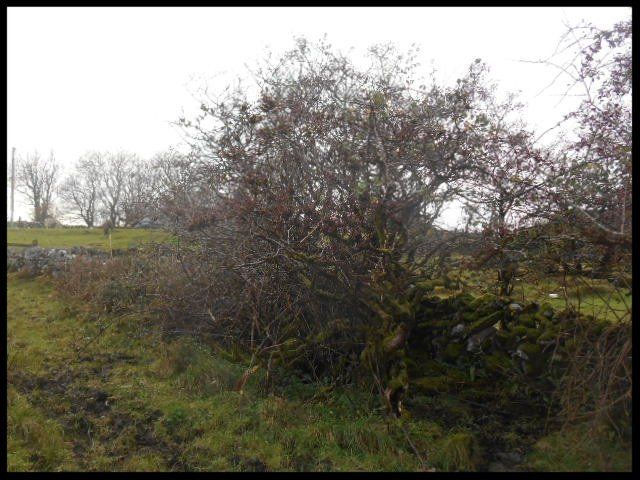A Life Unproven But The Cult Endures

One of the four great pre-Christian festivals in Ireland, Imbolg, was celebrated at the start of February. "Imbolg" means in the womb and the festival was a celebration of fertility and renewal as nature re-asserted itself after a dormant period. St Brigid also happens to be a symbol of fertility and it may well have been a very clever ideological exercise on the church's part placing the feast of the second most important Irish saint at the time of year of a significant pagan festival.
Historical evidence of Brigid is lacking. The matter is not helped by the fact that the first Life Of Brigid was written in 675 A.D. more than 150 years after her death. She is credited with living from 450 to 520 A.D. Because of her doubtful provenance, some consider Brigid to be a pre-Christian divinity which was expediently adopted by the emboldened Christian church.
If the matter of Brigid's birth is questionable, her death is equally so. She is said to be buried in Downpatrick, County Down with the other two marquee names of Irish sainthood, Patrick and Colmcille. As the Downpatrick connection was only first mooted several centuries after Brigid's death ( 12th century), it may be treated with scepticism also.
Whilst Brigid may never have existed, her cult remains very robust a millenium and half later. Right across Ireland today, the feast day will be celebrated mainly through official religion though a minority will mark the occasion in a "hybrid" way or even in an exclusively secular style. My sons make St Brigid's crosses from the rush plant at the local primary school. They tell me that her feast will be honoured tomorrow with a Mass.
Prior to the Great Hunger of 1845-48, Brigid was the protectress for millions of impoverished. Her cross would have been a constant above the front doors of their abject dwellings. They believed Brigid would protect them and their livestock fr om evil.

"The chaste head of Ireland's nuns" has a holy well dedicated to her at Liscannor, just south of the Cliffs of Moher. Mass is said there each St Brigid's Day. It is actually a site more associated with another great pre-Christian festival, Lughnasa. The well was a major point of popular assembly at end of July to celebrate the harvest.
Meanwhile in the Burren, evidence of the Brigid cult is actually scarce.
One of the few sites dedicated to her is at Gragan West, just south of Corkscrew Hill on the Ballyvaughan-Lisdoonvarna road. The site comprises a hawthorn tree and a pair of hollows in the limestone. The hollows are known as St Brigid's Knees. There would have been an accompanying folk tale explaining why Brigid opted to kneel in this particular place. This site was obviously the focus of Brigantine veneration in the past. It appears remote now but the site is actually located on an old route way to Ballyvaughan. The route probably fell in to disuse with the mid-19th century construction of the pass known as Corkscrew Hill - a mile to the east of the site.

The "bush" beside the knee imprints would have been the focus of ritual also. Apart for this veneration of wood and stone, water was also interacted with for religious purposes in the past in the form of holy wells. When the Mediterranean religion reached Ireland in the 5th century, the new movement seems to have incorporated not only old cults, like Brigid, but these cosmological rituals too.
It is remarkable to think that some of these wood/stone/water ritual sites survive in Ireland today in a vibrant way like St Brigid's Well in Liscannor. However, the majority of the sites are a tale of neglect and abandonment in the context of Catholicism suppressing them in the fervour of the 19th century Devotional Revolution.
It was a local person Gary who showed me the site of bush and imprint last November. We had to remove a good deal of vegetation in order to expose the knee imprints. Gay told me the last group he guided to the site was from the U.S.A. It was a number of years ago on St Brigid's Day. The fact that the majority of historical Brigid ritual sites are no longer frequented on her feast date would suggest that the "globalisation" of Brigid by the church has been fairly successful.
The bush and knees are in a magical setting on high. West is a pass through the Burren hills and beyond that again are Galway Bay and Connemara. Gotta go back.



